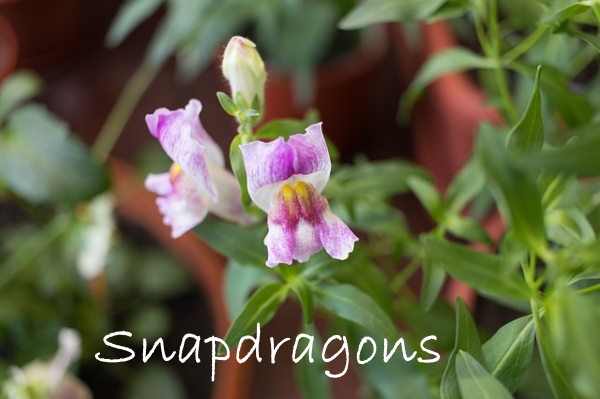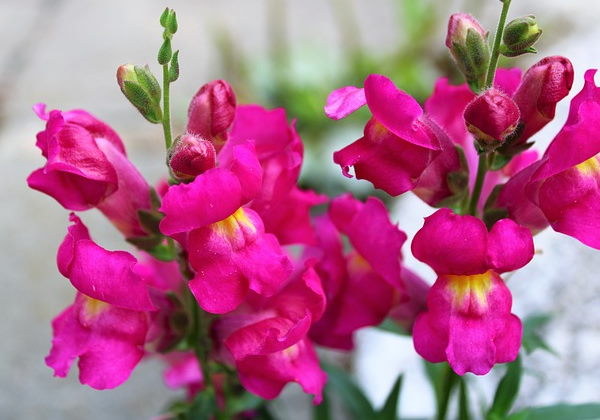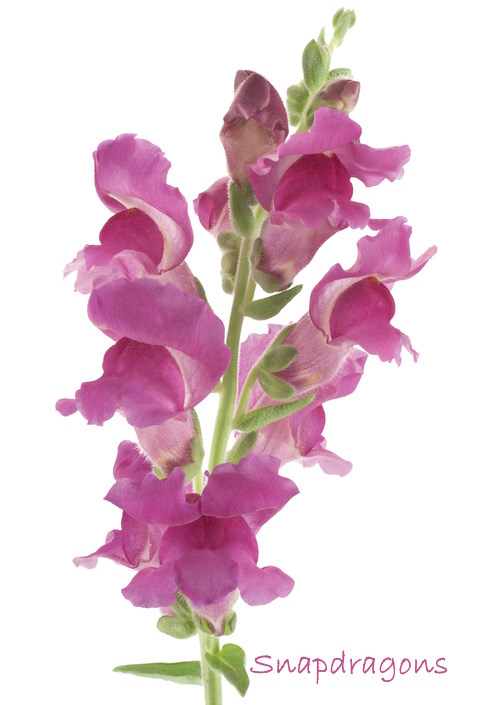How to Grow Snapdragon Flowers Indoors
Dwarf varieties of snapdragon flowers are easy to grow indoors all year long. Small 'Tom Thumb', 'Magic Carpet' and 'Twinny' make ideal houseplants, bringing vivid color and fresh garden style to any sun-splashed room.
 Love variety? Snapdragon flowers come in a big range of colors, and many bicolors.
Love variety? Snapdragon flowers come in a big range of colors, and many bicolors.Get to Know Snapdragons
Known by the botanical name, Antirrhinum majus, these tall spires of bright blooms are native to Southern Europe.
How big do snapdragons get? Some snaps can grow about 2 ft in height, but you'll want a dwarf variety for growing indoors. These mini hybrids will only reach 4-6 in (10-15 cm) tall.
Dwarfs include 'Magic Carpet' with the traditional pouched bloom, and 'Twinny' with open, ruffled petals.
These compact, low-growing snaps are ideal for patio containers, too -- or window boxes and front-of-the-border garden beds. There are rare trailing snapdragons, perfect for hanging baskets.
Clusters of colorful blooms grow on upright flower spikes and are available in almost every color imaginable, including bicolors. Many cultivars range from white, cream and yellow to pink, burgundy and red.
How to Get the Most Snapdragon Flowers
Pinch your plants when stems are 2 to 4 inches tall to promote branching. You'll get more compact plants this way...and more flower spikes.
Deadhead spent flowers to encourage more blooms.
Shed some light to make snapdragon flowers bloom. Give them as much full sun as you can indoors, setting them directly in front of a sunny window or in a sunroom. Outdoors, snaps will tolerate partial shade.
Keep them cool. Snaps thrive in cool weather, giving the best show of blooms in spring and fall.
 Easy-to-grow Snaps add a bright splash of color anywhere. Photo: armennano
Easy-to-grow Snaps add a bright splash of color anywhere. Photo: armennanoBest Snapdragon Varieties for Growing in Pots
Snapdragons are tender perennials yet treated as annuals. You'll enjoy a long season of blooms before they start to fade. Plan to sow new seeds every year for the best show of flowers.
Look for dwarf varieties of Antirrhinum majus for indoor growing. 'Magic Carpet' and 'Tom Thumb' reach no more than 6 inches (15 cm) tall. 'Twinny' varieties are 12 inches (30 cm) high.
 Image: istockphoto
Image: istockphotoCaring for Snapdragon Flowers
Light: Full sun to partial shade
Water: Water thoroughly and often to keep potting mix constantly moist, but not soggy. Use a pot with a drainage hole to prevent root rot. If you're growing them on your patio, check them often so they don't dry out.
Humidity: Average room (around 40% relative humidity). If indoor air is dry, try one of these easy ways to increase humidity for your snapdragons.
Temperature: Snapdragons thrive in cool to moderate temperatures (60-75°F/16-24°C). If you choose to grow them outdoors, it's a good idea to harden off the seedlings before moving them outside in early spring. Snapdragon flowers will tolerate light frost.
Soil: Good-quality potting mix with added perlite. I use 3 parts mix to 1 part perlite for most garden plant containers.
Fertilizer: Feed every 2 weeks with a high-phosphorus (such as 10-30-10 NPK) water-soluble fertilizer to get the most flowers.
Propagation: Sow snapdragon seeds indoors 6 weeks before last frost date if transferring them outdoors. (They will tolerate light frost if you make the move a gradual one.) Use a sterile seed starting mix, barely covering seeds (they need light to germinate). Keep medium moist, but not soggy at 65-70°F/18-21°C. You can expect to see seedlings poking up in about 10-12 days.


